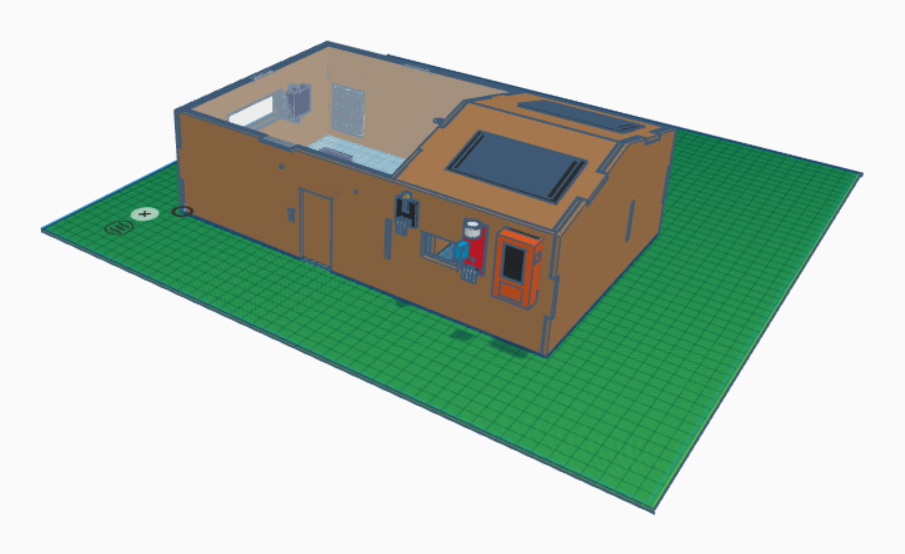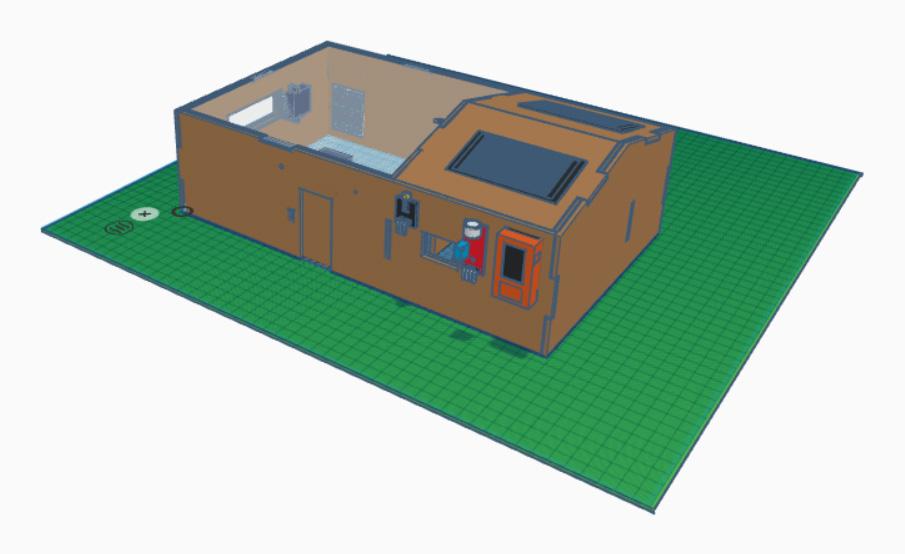
Living room -> It is designed for temperature and access control.
Using a pack of resistors, a mini fan, a servo to open/close the window and a temperature sensor, we can regulate the temperature inspired in passive houses. The main purspose of this part is to save energy by regulating the temperature based on the outside temperature, inside temperature and “ground” temperature (coming from a pipeline underground with “constant” temperature”, as in real passive houses).
Also, access to the house can be granted using a ESP32 cam (the idea here is to use a web-server so that with the phone you can control the access to the house). Full functionality of the access control is still pending to be defined, but the idea is to use a web server built-in the ESP32-cam so that you can give access to someone else depending on the video image provided. Also, there’s an option to introduce a secret code to open the door from outside.

Bedroom -> It is designed for light and sound control. Using a PIR sensor
(detecting precense of people) and a LDR for measuring ambient light, we can decide to switch on or off the lights (a ring of RGB lights which is way more fance than a conventional LED). A mic can be used to determine if there’s too much noise pollution so the window of the bedroom closes automatically.

Kitchen -> We are considering replacing the original bathroom we intended to do with a kitchen.
The main reason is that introducing some kind of water saving system inside the house is somehow complicated, so we prefer to leave this for a greenhouse is necessary (outside the house), for a future version (once all this has been defined). So the idea behind the kitchen is to detect fire and smoke. Here we have a servo controlling a window to produce natural ventilation if we detect high concentration of gas particles or in case of fire (using a flame sensor), then we close the window (to prevent air producing more flames). In both cases, we can use a buzzer to produce an alarm.
